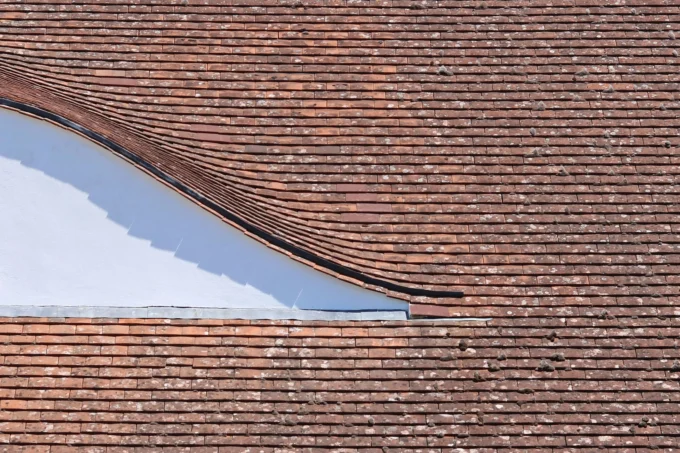- Home
- Articles
- Architectural Portfolio
- Architectral Presentation
- Inspirational Stories
- Architecture News
- Visualization
- BIM Industry
- Facade Design
- Parametric Design
- Career
- Landscape Architecture
- Construction
- Artificial Intelligence
- Sketching
- Design Softwares
- Diagrams
- Writing
- Architectural Tips
- Sustainability
- Courses
- Concept
- Technology
- History & Heritage
- Future of Architecture
- Guides & How-To
- Art & Culture
- Projects
- Interior Design
- Competitions
- Jobs
- Store
- Tools
- More
- Home
- Articles
- Architectural Portfolio
- Architectral Presentation
- Inspirational Stories
- Architecture News
- Visualization
- BIM Industry
- Facade Design
- Parametric Design
- Career
- Landscape Architecture
- Construction
- Artificial Intelligence
- Sketching
- Design Softwares
- Diagrams
- Writing
- Architectural Tips
- Sustainability
- Courses
- Concept
- Technology
- History & Heritage
- Future of Architecture
- Guides & How-To
- Art & Culture
- Projects
- Interior Design
- Competitions
- Jobs
- Store
- Tools
- More
Unlocking Spaces: Wayfinding as a Design Tool for Enhanced User Experience
Explore the significance of wayfinding as a powerful design tool in our fast-paced environments. This article uncovers how effective wayfinding enhances navigation and accessibility through thoughtful signage and spatial layouts.

In today’s fast-paced world, navigating through complex spaces can be overwhelming. That’s where wayfinding comes in as an essential design tool. By combining art and functionality, wayfinding helps us create intuitive environments that guide people effortlessly from point A to point B.
As we explore the principles of effective wayfinding, we’ll uncover how thoughtful design can enhance our experiences in public spaces, workplaces, and even our homes. From signage to spatial layouts, wayfinding shapes our interactions and influences our sense of direction. Join us as we delve into the transformative power of wayfinding in design and its impact on our daily lives.

Table of Contents
ToggleOverview of Wayfinding
Wayfinding encompasses the methods and systems that aid individuals in navigating their environments. Effective wayfinding integrates visual, auditory, and tactile cues to guide people effortlessly. It serves as a critical design tool, enhancing usability and accessibility in diverse spaces such as hospitals, airports, shopping centers, and urban landscapes.

Key Components of Wayfinding
- Signage: Clear, readable signs provide essential information, directing users to their destinations while reducing confusion.
- Spatial Layout: Thoughtful organization of physical spaces allows for intuitive movement, enabling people to find their way without unnecessary detours.
- Landmarks: Notable features or structures within the environment serve as reference points, assisting individuals in visualizing and navigating their routes.
- Technology: Digital applications and interactive kiosks offer real-time navigation support, improving overall user experience.
Benefits of Wayfinding
- Enhanced Mobility: Well-designed wayfinding systems lead to smoother navigation, minimizing stress and time spent searching for locations.
- Increased Safety: Clear pathways and signage contribute to safer environments, reducing the risk of accidents and confusion.
- Improved Accessibility: Thoughtful wayfinding addresses diverse user needs, ensuring that all individuals, regardless of ability, can navigate effectively.
- Positive Experiences: A cohesive wayfinding approach fosters a sense of comfort and ease, enhancing overall satisfaction in various settings.
Applications of Wayfinding
- Public Spaces: Parks and plazas utilize wayfinding to direct visitors to amenities and points of interest.
- Workplaces: Efficient wayfinding within office environments supports employee collaboration and productivity.
- Residential Areas: Clear navigation aids in neighborhoods enhance community engagement and connectivity.
Wayfinding’s multifaceted approach significantly impacts our daily interactions within spaces, streamlining movement and elevating our experiences.
Importance of Wayfinding in Design
Wayfinding plays a vital role in design, guiding users through spaces with ease and clarity. Understanding this importance helps us create environments that are not only functional but also enjoyable to navigate.

Enhancing User Experience
Wayfinding enhances user experience by simplifying navigation in complex environments. Clear signage, intuitive layouts, and recognizable landmarks create a sense of comfort. Engaging users through visual cues reduces confusion, allowing for seamless exploration. For example, in a large shopping mall, strategically placed directories and clear paths to stores ensure visitors find their destinations quickly. A positive wayfinding experience can lead to increased satisfaction, inspiring users to return to the space.
Improving Accessibility
Wayfinding is crucial for improving accessibility in design. Thoughtful consideration of diverse user needs ensures that everyone can navigate comfortably. Incorporating features like large-print signs, audio descriptions, and tactile maps enables people with varying abilities to access spaces independently. For instance, public transportation systems benefit from clear wayfinding signage that accommodates all users, including individuals with disabilities. By prioritizing accessibility through wayfinding, we foster inclusive environments where all users feel welcome.
Key Elements of Wayfinding
Wayfinding as a design tool incorporates various elements that collectively facilitate navigation. Among these, we recognize the importance of signage, symbols, and spatial orientation.

Signage and Symbols
Signage and symbols serve as the primary means of communication within wayfinding systems. Clear signage must use legible fonts and appropriate colors to enhance visibility and understanding. Symbols should follow universal design principles, allowing users from different language backgrounds to interpret information effortlessly. For example, pictograms for restrooms, exits, and information desks simplify navigation in diverse environments. Effective signage often includes directional arrows, distance markers, and informative text that guide users efficiently. Integrating illuminated signs in low-light conditions improves accessibility, ensuring that all users can navigate safely.
Spatial Orientation
Spatial orientation focuses on the layout of spaces and how design supports user navigation. Intuitive spatial layouts employ logical pathways, minimizing obstacles that can confuse users. Landmarks, such as large sculptures or distinctive architectural features, help individuals reference their location. We can enhance orientation by introducing wayfinding nodes, such as kiosks or maps, at strategic points throughout a space. Furthermore, incorporating color-coding systems within areas like hospitals or campuses allows users to associate specific routes with designated colors, simplifying navigation. By blending visual cues with thoughtful spatial arrangements, we encourage user confidence and streamline movement in complex environments.
Applications of Wayfinding as a Design Tool
Wayfinding serves as a critical design tool with diverse applications across various fields. We explore two primary areas: urban planning and interior design.

Urban Planning
In urban planning, wayfinding enhances navigation within cities, making them more accessible and user-friendly. Effective designs integrate clear signage, walkable paths, and public transportation indicators to create navigable environments. Authorities implement pedestrian-friendly features like dedicated crosswalks and bike lanes to foster mobility. Cities like Barcelona exemplify successful wayfinding, employing comprehensive mapping and intuitive navigation systems. These strategies not only improve travel efficiency but also promote public engagement and encourage exploration of urban spaces.
Interior Design
In interior design, wayfinding optimizes movement within buildings. Designers utilize visual cues like color codes, symbols, and signage to guide individuals seamlessly through areas such as hospitals, schools, and office spaces. Clever layout strategies, such as open floor plans and clear sightlines, minimize confusion. For instance, in hospitals, strategically placed directional signs coupled with prominent landmarks help patients and visitors locate departments easily. Employing tactile elements, like textured signage, ensures inclusion for all users, enhancing overall experience and accessibility.
Conclusion
Wayfinding serves as a critical design tool that shapes how we interact with our environments. By integrating clear signage and thoughtful spatial layouts, we enhance user experiences across various settings. Effective wayfinding aids navigation, promotes safety, and fosters accessibility, making spaces welcoming for all.
Key elements like legible fonts, universally recognized symbols, and intuitive pathways contribute to seamless navigation. These design principles ensure that individuals can navigate environments without confusion, increasing satisfaction and encouraging return visits. Cities such as Barcelona demonstrate successful implementation, showcasing the benefits of clear wayfinding strategies.
Incorporating wayfinding into urban planning and interior design allows us to optimize movement and create inviting atmospheres. We can facilitate effortless navigation through smart layout choices and engaging visual cues, ultimately transforming how individuals experience their surroundings.
By prioritizing wayfinding in our design processes, we address diverse user needs directly, resulting in environments that enhance mobility and inclusivity. As we continue to explore and implement wayfinding strategies, our collective focus on intuitive design remains essential for improving daily life.
- architectural signage
- architectural wayfinding
- architecture and wayfinding
- design for accessibility
- design for orientation
- effective wayfinding
- enhancing user experience
- interactive wayfinding
- intuitive design
- navigation in architecture
- public space wayfinding
- signage design
- spatial awareness
- spatial navigation
- user experience design
- user-centered design
- visual communication in design
- wayfinding design
- wayfinding strategies
- wayfinding systems
- wayfinding tools
Submit your architectural projects
Follow these steps for submission your project. Submission FormLatest Posts
The Collaboration Between Architects and Steel Suppliers: Why It Matters
Architecture transforms vision into reality through countless partnerships, but one relationship often...
Step-By-Step Guidance For Seamless Moves to Another Country
Moving abroad is a big project, but it does not have to...
Remembering Frank Gehry: What His 96 Years Teach Us
Frank Gehry’s passing at the age of 96 marks a significant moment...
Furniture Movers by the Hour: Complete Guide to Hourly Moving Services in 2025
Introduction Furniture movers by the hour are professional moving services that charge...












Leave a comment